|
Now we all want to save plastic, no question about that. The easiest way to do this, is to start in our own home. I don't even want to think about the amount of little bags or foil I used to quickly wrap my kids lunch. Many years ago I made reusable lunch wraps and they are still in constant use. I experimented with lots of different materials and patterns for reusable sandwich wraps over the years. Here, I 'll show you my sandwich wrap pattern, that I like best at the moment .... and it totally helps, that it is SUUUUPER cute. I'm sure you can't wait to start sewing, so how to make a reusable lunch wrap? It's a lot easier than you think. Reusable lunch wrap pattern : please read through the instructions first ( finished size aprox. 12"x 12") Tools needed: -sewing machine -cutting mat/ rotary cutter and acrylic ruler -pins or clips and iron optional tools to make your life easier: -spray baste -fabric glue pen for your foundation paper piecing Materials needed: -one of the food quilt blocks in size 6"x 6" (will be 6 1/2" square when sewn together) I used the pretzel, ice cream cone, and pop corn. - 2 strips of fabric for the side of the quilt block 3,5"x 6,5" - 2 strips of fabric for the top and bottom of the quilt block 12,5"x 3,5" - 2" velcro strip (I cut the 'hooked' part a little shorter 1,5") for the lining: - a piece of fabric 12,5"x 12,5" - Heat'nBond vinyl 12,5"x 12,5" (or a piece of clear vinyl 12,5"x 12,5") Step 1: Sew the quilt block of your choice in size 6"x 6" (the finished block will be 6,5"x 6,5" when sewn together, that includes the 1/4" seam allowance) Then cut the fabric strips for the sides and top and bottom of the quilt block. What fabrics can I use for reusable snack bags and sandwich wraps? You want fabric that is water resistant or waterproof. That's the reason why I used Heat'nBond Vinyl to cover the lining fabric. You could also use oilcloth ( typically cotton) that's coated in linseed oil to make it waterproof. You could also use beeswax covered fabric or coat your fabric with beeswax yourself. Step 2: Attach the side strips of fabric and the top and bottom strip to the quilt block. Sewing the side strips on first and then the other two fabric strips. Square off the sandwich wrap top with your ruler, so it measures 12,5"x 12,5". Then cut the lining piece of fabric and the Heat'nBond to 12,5"x 12,5". Step 3: Attach the Heat'nBond to the lining fabric. This is done by peeling off the paper of the vinyl and putting the 'sticky' side towards the fabric. You can still correct it, it will only melt into the fabric once you press it. lay the paper on top and press it with medium heat. If you're using clear vinyl, you just cut the vinyl the same size as the lining piece and lay it on top of the lining fabric. *HeatnBond Iron-On Vinyl contains no BPA or lead. However, Iron-On Vinyl does utilize a plasticizer, DID in the manufacturing process. At this time there is no data testing regarding Iron-On Vinyl on children's toys, bibs, food storage, etc. since this product was not intended for children. Step 4: Cut the VELCRO strips. I did cut the 'hooked' part to 1,5" and the velvet part a little longer to 2". Btw. here is a little fun fact about VELCRO that you probably didn't know. VELCRO was invented by a gentleman in Switzerland named George de Mestral in the 1950s. In Switzerland French is one of the official languages of the country. So VELCRO got its name from the French words “velour” (velvet) and “crochet” (hook), de Mestral created the iconic VELCRO® trademark to identify his brand of hook and loop fastener. Stitch the 'hooked' part of the VELCRO right underneath the quilt block in the center of the bottom fabric. Stitch the 'velvet' part to the center of the top edge of the sandwich wrap, with the velvety side facing up. (I placed a small 'JoeJuneandMae' logo underneath it as well) Step 5: Place top fabric and lining fabric of your lunch wrap, right sides together and pin or clip in place. (if you're using clear vinyl, the vinyl will now be placed between lining and top of your lunch wrap.) Then cut off the corners at a 45° angle. Measure 2" from the corner edge and align your clear ruler at the 45° line, as shown in the photo. The long side of the cut off triangle will be 4". Then pin or clip the corners in place as well. Step 6: Stitch all the way around it with 1/4" seam allowance leaving a 3" opening on one side for turning your sandwich wrap later. Before turning the sandwich wrap inside out, clip the corners carefully , this gives you nice sharp edges when turned inside out. Now turn the lunch wrap inside out and push out the edges carefully. Step 7: Fold in the seam allowance at the opening and stitch close with a very small seam allowance. And here we go ... You are all done and you are now the owner of the cutest reusable sandwich wrap. Aren't these the best? Which one is your favorite? I know you want to pull out all your cute fabrics right now and start sewing a reusable lunch wrap right away, am I right? Happy sewing Ingrid xx
2 Comments
There is something to be said about quilters and cats, right? At least it seems like every quilter has a cat, or is it just me? This super adorable fabric line called 'Cats Meow' from Riley Blake Designs had me thinking about my cats immediately. I mean doesn't a quilter's cat , deserve a quilted cat bed? I sure would think so. So here we go, I made the cutest quilted cat bed pattern... How to sew a quilted cat bed? Quilted Cat Bed: please read through the instructions first ( finished size aprox. 18" diameter and 4" high) Tools needed: -sewing machine -cutting mat/ rotary cutter and acrylic ruler -pins or clips and iron optional tools to make your life easier: -spray baste -fabric glue pen for your foundation paper piecing Materials needed: - the sleeping cat quilt block in size 10"x 10" (will be 10 1/2" square when sewn together) or the Cat's Back or Yarn Ball quilt block or any other quilt block of your choice. - 56x 2.5" squares for the bottom of the cat bed to surround the quilt block (note, you will cut off 4 of the corner squares when cutting the bottom of the cat bed into a circle, but it's easier to sew with these 4 corner squares in place) - 135x 2.5" squares for the edge of the cat bed. - a piece of fabric about 18"x 18" for the bottom backing of the cat bed - a piece of batting about 18"x 18" (I used a thicker wool batting I had left over from a quilt) - stuffing for the edge of the cat bed - a 56" bias binding strip 1 1/4" wide Instructions: Step 1: Sew the sleeping cat quilt block in size 10"x 10". The quilt block will be 10.5"x 10.5" when sewn together, this includes the 1/4" seam allowance. Step 2: Cut all the fabric squares. There are 56 fabric squares around the sleeping cat quilt block for the bottom of the cat bed and another 135 fabric squares for the edge of the cat bed. (which we will get to later) Place the squares around the quilt block to your liking, I like to place them totally random, and as you can see, I love fussy cutting. So as with some of my other sewing projects I used parts of these super adorable prints to highlight my fabric squares. Start by sewing the squares together into rows. Begin with the inner squares and then do the outer squares. I like to sew the squares at the top and bottom of the quilt block together first and attach them to the quilt block, that's 5 blocks at the top and 5 at the bottom. Then sew the squares at the sides together into a row, that's 7 squares on each side and attach them to the quilt block. Repeat for the blocks of the outer row. Step 3: Place the piece of fabric for the bottom backing in from of you, with the wrong side facing you. Place the batting on top of the back piece of fabric then add the patchwork top of the cat bed bottom on top of the batting, the right side facing you. Essentially you have a 'quilt sandwich', backing, batting and quilt top. I like to use spray baste (ex: Odif Temporary Adhesive Spray) to keep the layers together. But you can just as easily use safety pins or use basting stitches. Step 4: Draw a circle on the square. I measured 9" from the center of the square ( as shown in photo 1) and drew a circle on the square for the bottom of the cat bed. Sew along that circle for extra support. Now quilt the bottom of the cat bed to your liking. I did some hand quilting around the shape of the cat in the sleeping cat quilt block, and added some straight line quilting to the squares. Then cut the bottom of the cat bed along the circle line that you drew/sewed onto the square. My circle ended up being a little less than 18" diameter through the quilting. Step 5: Sew the squares for the cat bed edge into one long rectangle of 5 squares high and 27 squares long. (it should now be 10" high and 54" long) Again I placed the squares totally random, it's up to you, just let your creativity run wild. Then fold the rectangle for the edge in half, right sides together so the two short ends align and stitch them together. You now have a circle for the edge of the cat bed. Then fold the rectangle in half lengthwise, wrong sides together. This will be the edge 'tube' of your cat bed. Step 6: Clip the 'tube' rectangle of your cat bed edge to the bottom of the cat bed. Right sides together to the right side of the bottom of the cat bed. (as shown in the photo, not the quilted top!) Stitch in place with a 1/4" seam allowance but leave two 3" openings for stuffing your 'tube'. If your 'tube' rectangle and base are not 100% the same length, it's not a problem at all. Let the fabric gather a little bit as you sew. This will not be visible at all after you stuffed the edge of the cat bed. Leave the two 3" openings on opposite sides of the tube. This makes stuffing the tube easier. Stuff your tube pretty full, as stuffing tends to settle with use. Then sew the two gaps closed. Step 7: I like to finish the inside seam of the cat bed with a bias binding. If you want, you could also just use pinking shears and cut along the edge. This seam or edge won't be visible, since it's under the edge tube. I personally think a bias binding just gives your cat bed the deserved finishing touch. Clip or pin the bias binding, right sides together, in place. I did this from the 'tube' side. So when you fold the binding over, you have more room to sew it in place. Fold over the beginning of your binding for a 1/4". Then stitch the binding all around with 1/4 " seam allowance, when you get to the end, just let it overlap. Step 8: Fold over the binding towards the 'cat' side and clip or pin in place. Then hand stitch the binding to the bottom of the cat bed. It's very tight to machine stitch here, since the 'tube' is already stuffed. It's much easier to sew the binding by hand. Once you're done turn the cat bed, so the binding edge is tucked in on the inside of the cat bed. The clean finish is now on the outside of the cat bed. And there we go, it's all done. And I think you have to agree, this is the cutest quilters cat bed ever, right? Thank you so much Riley Blake Designs for the opportunity to design this cat bed pattern and this small quilt block pattern series to match it. Thank you for supplying the super pretty fabric series 'Cat's Meow' designed by Shawn Wallace, that I used in this quilt pattern series. Isn't this cat bed an absolute jewel? I'm sure any cat would just love to cuddle up inside this beauty. Ohh hey, go figure, my cat just did... :-) Happy sewing.... Ingrid xx Do you love boxes and baskets as much as I do? I have to admit I am a little bit obsessed. I love storing things in little boxes, baskets and containers, especially if they're square shaped. So I decided it's high time I made a free pattern for some little square fabric boxes. When I saw this new fabric line from Minkie Kim for Riley Blake Designs I thought fruits, fruits and some more fruits. And these delicious fruits needed to go somewhere special, don't you agree? So I made some cute little square fabric containers. These are really easy to make. Fabric square boxes: please read through the instructions first Tools needed: -sewing machine/ thread and fabric -cutting mat/ rotary cutter and acrylic ruler -pins or clips and iron optional tools to make your life easier: -spray baste -fabric glue pen for your foundation paper piecing Materials needed: box sizes: S - 4"x 4"x 4" , M - 5"x 5"x 5", L - 6"x 6"x 6" ( width x hight x depth) S: quilt block apple in 4" size (will be 4 1/2" when sewn together) 4 squares 4 1/2" of fabric for exterior 5 squares 4 1/4" of 'soft and stable' @byAnnie or Pellon Fusible Flex foam stabilizer 5 squares 4 1/2" of fabric for lining. M: quilt block strawberry in 5" (will be 5 1/2" when sewn together) 4 squares 5 1/2" of fabric for exterior 5 squares 5 1/4" of stabilizer (see above) 5 squares 5 1/2" of fabric for lining L: quilt block lemon in 6" (will be 6 1/2" when sewn together) 4 squares 6 1/2" of fabric for exterior 5 squares 6 1/4" of stabilizer (see above) 5 squares 6 1/2" of fabric for lining 1. Sew your apple quilt block ( size 4"x 4") and cut your fabrics and foam stabilizer according to the measurements given above.. 2. Add the foam stabilizer to your fabric squares. If you have fusible stabilizer you will need to iron it on your squares. If you're using 'soft and stable' @Byannie like me, you can attach it to your fabric squares with glue baste spray. Your foam stabilizer will be 1/8" smaller than your squares. 3. Assemble the exterior of your fabric square box. Place your squares as shown above. First start with sewing your apple quilt block to the center square. Before you start sewing, mark 1/4" cross from both edges at the corners. Start sewing at the point of the cross with 1/4" seam allowance, back stitch at the beginning and the end of your seam. Then sew the opposite square of your quilt block to the center square the same way. Then add the two side squares. Sew all 4 squares to your center square the same way. The center square will be the base of your fabric cube. Next you will need to lay the adjacent side pieces together (right sides together). And sew them the same way, with a 1/4" seam allowance, start right at the top, but stop 1/4" from the end. Repeat for all 4 sides till your cube is all sewn together, like shown above. 4. Sewing the lining of your fabric cube Place your lining squares the same way you placed your exterior squares. Stitch them together the same way too. Attach the side squares to the bottom square first. Then sew the side seams. Leave a 3" gap in one of the side seams for turning your cube later. 5. Put the square fabric box together. Turn your exterior box right sides out, but leave your lining cube the way it is, insides out. Now place your exterior box inside the lining box. Align the side seams and pin or clip in place, make sure the top edges align. Sew along the top edge with 1/4" seam allowance. To finish your fabric basket/ box, turn the box right sides out through the opening in the side seam of the lining. Press the lining at the top edge into the box. Do not press down the foam stabilizer, this way you get a cute trim of your lining fabric at the top edge. Stitch along the top edge with a small seam allowance. Thank you Riley Blake Designs for the opportunity to design these fruity quilt block patterns and for supplying the super pretty fabric series 'misty morning' designed by Minkie Kim that I used in this quilt pattern series. Happy sewing everyone Ingrid x
Do you have little dancer children? Do you want them to have the cutest ballet bag ever? You have come to the the right place. Riley Blake Designs just released this absolute perfect fabric series called 'Spin & Twirl' for stylish dancers. It's not too girly, of course it has pinks and whites, but the navy is such a perfect balance and gives this fabric series a classy touch. So let's get sewing, and let's make the best ballerina bag for our little dancer kids. Finished bag size: 14" wide x 18" high Materials needed: (width x hight) - 1 ballerina quilt block 10"x10" fabric around the quilt block: - 2x strips of fabric 2,5"x 10,5" - 2x strips of fabric 2,5" x 14,5" fabric for the bottom: - 1x 14,5" x 10" fabric for back: 49 squares of 2,5"x 2,5" ( or one piece of fabric 14,5"x 14,5") lining: - 1x piece of fabric 14,5" x 38" extras: - 1x piece of thin fusible batting (for example Vlieseline H630) - 2x pieces of fabric for the loops 2,5"x 2" - 2x pieces of fabric for the tabs ( cords) 2"x 1,5" - 2x pieces of fabric 14 1/4"x 2,5" for the casing at the top. - 2x pieces of 72" cord. Instructions: 1. Sew the ballerina quilt block ( or any other quilt block of the ballet series) in the 10"x 10" size. The block will be 10,5"x 10,5" when you finish it. (10"x 10" refers to the block size when incorporated into a project) 2. Cut the fabric strips for the sides of the quilt block. (if you're using directional fabric, check the direction of the print before cutting) Attach the 2,5" fabric strips to the quilt block. First sew the two shorter strips to the sides of the quilt block, then attach the longer strips to the top and the bottom of the quilt block. If you're using directional fabric check the direction before attaching the strips. 3. Cut 49 pieces of 2,5"x 2,5" squares and place them the way you want them for the back of your bag. I love them to be totally random. This Riley Blake Designs 'Twist and Twirl' fabric line is absolutely perfect for fussy cutting, so I went a little crazy... LOL. 4. How to sew these small fabric squares together? There are several different ways to sew fabric squares together. For this ballerina bag I liked to sew the square together by rows. Then I pressed the seams in opposite directions, to get perfect nesting seams and therefore perfect corners. ( See video) 5. Now that you're done with the back of your bag, it's time to place the fabric pieces in the right order and piece them together. You will need to place the front quilt block, then the bottom piece of fabric and the back piece in one row, as shown above. Beware of the directions of your quilt block and back piece, you want them facing each other, or facing the bottom of the ballerina bag. Now sew these 3 pieces together, press again and add fusible batting. 6. If you wish, you can either hand or machine quilt your outer ballerina bag piece. I did a combination of both. I hand quilted around the ballerina quilt block. Then I machine quilted the front and the back piece with simple straight line stitching. 7. Sewing the loops for the cord at the sides of the ballet bag. Cut the fabric pieces, fold them in half lengthwise and press in the 1/4" seam allowance. ( photo 1). Then stitch along the edge with a small seam allowance. ( photo 2). Fold in half so the short edges align and clip in place at 1" from the bottom edge of the bag on both sides. ( photo 3). 8. Making the casing: Cut the fabric pieces for the casing. Fold in the short ends 1/4" and stitch in place with a small seam allowance. Then fold the casing in half lengthwise. Clip or pin casing in place at the top edges of your ballerina bag so that it's centered and the raw edges align.( photo 2) 9. Preparing the outer piece of the ballerina bag and the lining. Fold the outer piece of the ballerina bag, right sides together in half, so the top edges align and stitch along the sides with 1/4" seam allowance. stitch the loops between these seams. You want to stitch across the loops twice for extra strength. Cut the lining piece according to the measurements given. Fold in half right sides together, so the top edges align and stitch along the sides with 1/4" seam allowance. Leave a 3-4" opening on one side for turning the bag later. 10. Turn the lining inside out and place it inside the outer piece, right sides together. Pin or clip the two pieces together so that the top raw edges align. I like to start at the side seams and place those on top of each other, then clip the rest. The casing will be between the two pieces. Now stitch along the top edge with a 1/4" seam allowance. Turn the bag inside out through the opening that you left in the side seam. Close the opening with a small seam allowance. Push the lining inside the bag. 11. Stitch along the top edge of the ballerina bag. 12. Adding the cord to the bag. I love these little tabs on the cord, but you can also just tie the cord with a knot or add some beads. For the tabs, cut the fabric pieces as mentioned above and fold in a 1/4" seam allowance on the longer edges first, then fold in the shorter edges 1/4" and press. (photo 1) - How to put in the cord into the casing of the bag? You need to put the cord through the casing before you attach the tabs. Attach a large safety pin to one end of the cord and go through the front part of the casing onto the back part of the casing coming out at the same side you went in. I was going in from the right with the first cord, going through the back part of the casing and coming out on the right as well. Going in from the left with the second cord through the front part of the casing onto the back part of the casing coming out again at the left with the second cord. Go through the bottom loops with one end of the cord on either side of the bag. ( photo 2) Fold the tab in half and place both ends of the cord in the center and stitch in place. Repeat for the second cord. And here you go all done and finished, easy enough, right? Do you want to make another one? I absolutely think so :-) Here are three more quilt blocks, that I designed especially for this fabric series. Which one is your favorite? Thank you Riley Blake Designs for the opportunity to design this quilt block pattern series and for supplying the absolutely adorable fabric series 'Spin & Twirl' that I used in this quilt pattern series. Happy sewing everyone! Ingrid xx Are you always as short on Christmas gift ideas as I am? I am trying to collect all sorts of ideas all year around, so when it gets close to Christmas I have a few DIY projects lined up. This is one of those projects, a DIY fabric matchbox cover. It's a perfect Christmas gift for him or her .... a fabric matchbox cover is super decorative and who doesn't need matches? It's actually a very nice gift for all year around. Best of all, these decorated matchbox covers are super easy and quick to make, and a perfect scrap buster. So lets get started... Materials needed: - an assortment of large matchboxes ( the ones I used are 2.5" wide, 4.3/8" long and 3/4" deep ) - fabric scraps for the Star quilt block and the side and the back of the matchbox ( depending on the size you're making, of course) For the matchbox size that I used, it is - 2 strips of 1.5"x 3" of fabric for the sides of the quilt block. - I piece of fabric 5"x 4" for the back Sewing machine and thread. Instructions: 1.Open the side Open the side of your matchbox where it's glued together. I used a sharp knife. That way you can easily sew your fabric onto the cardboard matchbox. Glueing it to the matchbox is an alternative, but I find that the glue shines through the fabric and stains it sometimes, especially when you're using solid fabrics. So the decorative matchboxes look much nicer, when you sew the fabrics onto the matchbox. 2. Sew the star quilt block in size 2.5"x 2.5" 3. Prepare your matchbox In case you have printed matchboxes like the ones I am using, I suggest painting the matchbox with a light colored acrylic paint, just so the print of the matchbox won't shine through your fabric cover. The painting does not have to be perfect, do just one coat of paint so the print of the cardboard box is covered. And let it dry. 4. Cut your fabrics for your matchbox cover As I mentioned above, I cut two strips of fabric 1.5"x 3" for the sides of the quilt block. And I cut a piece of fabric 5"x 4" for the back of the matchbox. And this piece of fabric is 5" wide and 4" long, in case you have directional fabric , like I do. 5. Sew the fabric pieces together First add the two side strips to the quilt block to the left and to the right, then add the backing piece of fabric and press. I used spray starch to press the fabric. So it stays really nice and flat. Fold over the front edge 1/4" and press. Fold in the side edges 1/4" as well, so the width of the fabric matches the width of your matchbox. This might be a tiny bit more than 1/4", you might want to adjust it a little bit as you clip your cover to the matchbox. 6. Clip the cover to the matchbox Clip the fabric cover onto the matchbox. Start at the front edge, at the strip for striking the matches, and work your way to the other end. Adjust the side edges if needed. Fold in the end edge under as well and clip in place. 7. Stitch the matchbox cover to the matchbox Starting at the front edge, stitch the matchbox cover in place. I sewed all the way around the outside edge first and then stiched straight lines to the back side. Then I stitched all the way around the star as well. 8. Glue the matchbox cover back together 9. Et voilà.... all done. Fabrics used in this project Art Gallery Fabrics Cozy and Magical. Isn't this DIY matchbox cover a super cute Christmas gift? Combine the matchbox with a set of candles or some essential oils and you have the perfect Christmas gift for him or her. What do you think? Which color of the star quilt block is your favorite? Ingrid xx Yes, if you're wondering, a vaccine card holder is a 'thing'. Now that more and more people are getting vaccinated, things are definitely looking a lot better. Restrictions are being lifted everywhere, meaning we will be returning to some sort of 'normal' in the near future. This depends strongly on as many people as possible receiving a vaccination. And this in return means lots of vaccine cards and vaccine card holders. The vaccine card might be an important item on our future trip/holiday packing list. While it's currently not clear how and if we will need our vaccine cards, one thing is for sure: you will want to keep it safe and clean, and why not do that in style? The international vaccine card isn't really a card. The little booklet was most probably, by the looks of it, not designed to be carried around. The CDC vaccine card is only made out of paper as well. So I decided vaccine cards, whether CDC cards or international vaccine cards need a pretty cover. After I made my free passport holder pattern, a sweet customer suggested to use the same pattern for the vaccine card and of course I had to add a little foundation paper pieced design. And here are actually two. The vaccine and syringe pattern, and the band aid pattern. Of course these patterns would be equally cute on a pouch, for example a pouch for your travel medical supplies. Or how about a fabric box for your medical supplies at home? A pillowcase or a cover for a coolpad and much, much more, I am sure you will come up with many more ideas, let me know in the comments. This vaccine card holder pattern is essentially the same as for the passport holder pattern and the international vaccine card is the same size as a passport. Materials needed: ( for both vaccine cards, international vaccine card and CDC vaccine card) outer piece: - 4"x 4" foundation pieced quilt block, vaccine and syringe or band aid outer piece: - 1 piece of fabric 4.5"x 4.5" (same as the background fabric of the quilt block ) - 2 strips of fabric 1 1/4" x 8.5" (same as the background fabric of the quilt block ) - 8 1/4" x 5 7/8" for the lining - 2 x 4" x 5 7/8" for the pockets - For a CDC vaccine card you only need one pocket piece of fabric, and one piece of clear vinyl 3 1/2"x 5 7/8" plus a strip of fabric for the binding 1 1/4"x 6". - 8 1/4" x 5 7/8" very thin but stiff fusible interfacing (I used Vlieseseline S320) In case your vaccine card is a different size, this overview shows you how to determine the right size for your outer piece and lining. Instructions: (for the international vaccine card) 1. Sew the quilt block of your choice, either the vaccine with the syringe or the band aid, in the 4"x 4" size. 2. Cut all your fabrics, lining and interfacing. Stitch the fabric pieces for the outer piece together the way its shown here in the assembly photo. Join the two squares first, then add the two strips of fabric at the top and bottom. This will be the outer piece of the vaccine card holder. 3. Iron on fusible interfacing to the wrong side of the outer piece of the vaccine card holder. Cut the outer piece to 8 1/4" x 5 7/8". ( check the size with your own vaccine card as shown above) 4. Fold the pocket fabric pieces in half aligning the longer raw edges and press. Then place these two on the outer piece aligning each with the left and right raw edge. 5. Place the lining piece on top of the outer piece with the two pockets, right sides together, pin or clip in place. Stitch around the outer edge with 1/4" seam allowance leave about a 3" opening at the bottom longer edge for turning your vaccine card holder later. Cut the corners at a 45° angle, that gives you nice crisp edges when turning the vaccine card holder inside out. Close the opening with a small seam allowance. Instructions for the vinyl version: (for the CDC vaccine card) Follow steps 1.-3. as above. 4. Fold the pocket fabric piece in half aligning the longer raw edge and press. 5. Stitch the binding to the piece of vinyl. 6.Place the pocket piece of fabric onto the left of the lining piece and the vinyl to the right aligning the raw edges to the left and to the right, as show in the photo below. 7. Place the outer piece on top of the lining piece, right sides together. Clip or pin in place and stitch around the outer edge with a 1/4" seam allowance leaving a 3" opening for turning the vaccine card holder later. 8. Cut the edges in a 45° angle ( this gives you nice crisp edges) . Turn inside out and close the opening with a small seam allowance. Here is a short sewing video for the vaccine card holder for you. Tadaaaa and Yippie all done .... What do you think? Super cute and easy, right? What other projects would you be making with the syringe and band aid pattern? Let me know in the comments. Happy sewing Ingrid xx Are you all as hopeful as I am, that traveling season will start soon again? This was something I really missed in the last 15 months. I bet all of you as well? More and more people are getting vaccinated and this means for all of us, that we're slowly getting back to normal. I am sooo looking forward to this. After 15 months of lockdown, more or less strict and 15 months of homeschooling two teenage daughters, you know that I really miss getting away :-) Therefore I decided our passports need some dressing up and I made this cute little passport holder pattern. The Airplane pattern is a super quick and easy foundation paper piecing pattern and suits this passport wallet perfectly, don't you think. I used the 4"x 4" size for the outer piece of the passport cover. I decided on a new sewing project to enhance our passports... this fabric passport holder looks just so much cuter going through passport control, don't you agree? So let's get to sewing this cute passport holder/ passport cover with the cutest paper pieced airplane quilt block. Materials needed: ( this is the size for a European Passport ) Most passports are very similar in size, (as you maybe know, we have a few nationalities in our family) the European passport is about 1/8" to 1/4" wider than the others. To double check the right size for your passport cover, fold the passport open add 1/8" all the way around the passport and then add 1/4" seam allowance, that will be the size of your lining and outer piece. outer piece: - 1 airplane quilt block size 4"x 4" - 1 piece of fabric 4.5"x 4.5" (same as the background fabric of the airplane block ) - 2 strips of fabric 1 1/4" x 8.5" (same as the background fabric of the airplane block ) - 8 1/4" x 5 7/8" for the lining - 2 x 4" x 5 7/8" for the pockets - 8 1/4" x 5 7/8" very thin fusible batting (optional but this gives a bit more stand I used Vlieseline H180) Instructions: 1. Sew your airplane quilt block in 4"x 4" size. Cut all your fabrics, lining and batting pieces. Stitch the fabric pieces for the outer piece together the way its shown here in the assembly photo. Join the two squares first, then add the two strips of fabric at the top and bottom. 2. Iron on fusible batting to the wrong side of the outer piece of the passport holder. Cut the outer piece to 8 1/4" x 5 7/8". ( check the size with your own passport as shown above) Fold the pocket pieces in half aligning the longer raw edges and press. Then place these two on the outer piece aligning the left and right raw edges. 3. Place the lining piece on top of the outer piece with the two pockets, right sides together, pin or clip in place. 4. Stitch around the outer edge with 1/4" seam allowance leave a 3" opening at the bottom longer edge for turning your passport holder or passport wallet later. Cut the corners at a 45° angle, that gives you nice crisp corners when turning the passport holder inside out. Close the opening with a small seam allowance. And YAY you're all done . Happy and save travels everyone.... I'm off to stitch a few more in other colors. Ingrid x PS: let me know what colors you are making , can't wait to see your photos on social media. Hey dog lovers, this little dog walking bag is absolutely perfect for you... Our dogs are part of our family and we love them dearly. The kids love playing with the dog and also love walking the dog as long as the sun is shining. The excitement fades quickly if it's raining and when it's cold outside. And it gets worse if they need to look for all of the dog walking equipment before even getting to the front door. That's why you need a dog walking bag. So I decided to come up with a cute little bag pattern, to keep all the dog walking equipment handy. This adorable dog walking bag is small enough to grab quickly, even when just walking around the block. It is big enough to keep all your dog walking kit in one convenient place. And most importantly this dog walking bag is pretty enough to keep by the front door. So win, win, win! Keep all your dog walking items in one convenient bag , the leash, dog litter bags, paw wipes, treats etc. Attach a pretty hook close to your front door and keep this cute dog walking bag right there beside it. You will never leave the house again and forget your dog walking kit. This 'walk my dog' pattern includes a foundation paper pieced beagle quilt block as well as the full pattern for the bag. You will find the comlete pattern including step by step photos, in the newest 'Make Modern Magazine' issue 38. I hope you will enjoy the walks with you puppy with this pretty dog bag. Happy sewing Ingrid x
A design collab with Riley Blake Designs - 'From the heart' fabric collection by Sandy Gervais Everybody needs pot-holders in the kitchen, and if they're this cute, even better, right? So how about pulling out some fabric and getting started. These are super easy to make and will be a perfect gift for any passionate cook. 'You-are-my-cupcake' pot-holders finished size 8"x 10" Fabrics needed per pot-holder: - finished cupcake quilt block 8"x 8" - cut 2 pieces of fabric for backing 8 1/2"x 10 1/2" - cut 1 piece of fabric 8 1/2"x 8 1/2" for pocket lining - 1 piece of fusible interfacing 8 1/2"x 8 1/2" for pocket - 1 piece of fusible interfacing 8 1/2"x 10 1/2" for backing - 1 piece of insul-brite 8 1/2"x 10 1/2" for backing - cut 1 strip of fabric 1 1/2"x 10" as binding for pocket - cut 1 strip of fabric 2"x 6" or use ribbon for hanging tab - bias tape 2"x 40" for pot-holder binding Sewing the potholder: 1. Finish the cup cake quilt block ( shop pattern here ) in size 8"x 8" 2. Cut all of your fabric pieces as mentioned above. 3. Iron on fusible interfacing to your quilt block . Then lay pocket lining piece of fabric face down on flat surface and lay quilt block face up on top of it. Clip or pin in place. 4. Quilt as desired, to hold these layers together. I did 1" diagonal squares. I used my acrylic ruler and a fabric chalk pen to draw the lines. 5. Trim to 8"x 8" size. 6. Iron on the fusible interfacing to one of the backing fabrics. Place the other backing fabric face down on a flat surface. Position the insul-brite on top of it and finish off with the backing/fusable interfacing piece, face up. Pin or clip all three layers in place. Quilt as desired, I did 1" diagonal squares again, as with the pocket piece. Make the hanging tab: ( or use a strip of ribbon) - Fold the 2"x 6" strip in half lengthwise and press. Fold in 1/4" seam allowance on each long raw edge and press again. - Stitch with small seam allowance. - Fold the tab in half and clip in place at the center of the back of your pot-holder. 7. Binding for the pocket: Take the strip of fabric 1 1/2"x 10" and pin it to the top of the cupcake pocket with the raw edges aligned and stitch in place with 1/4" seam allowance. ( photo 1) Fold the binding over to the back ( photo 2) and stitch in place ( photo 3) Finished binding seen from the front ( photo 4) Trim the ends. 8. Place the quilted pocket piece on top of the backing , aligning the side and the bottom raw edges. Clip or pin in place. 9. Round the corners of your pot-holder. I drew a 1/4 circle at the corners first and then cut it. here's a template for the corners, cut it along the black line. 10. Fold the bias tape over 1/4" at one end of the binding strip and clip or pin in place around the pot-holder with the end overlapping about 1/2" ( photo 1 ) . Stitch in place. ( photo 2 ). Fold the binding over to the backof the pot-holder and then hand stitch in place. Et voila .... all done. Thank you so much to Riley Blake Designs for supplying the absolutely adorable 'From the Heart' fabric series designed by Sandy Gervais that I used in this super cute project. This pattern is perfect for any 8"x 8" quilt block. I can't wait to see your makes. How do you like these pot-holders? Happy sewing Ingrid x follow me on Halloween is approaching and I want to show you how to sew a stunning little Trick-or-Treat bag with one of my quilt blocks... and best of all its really easy. Finished bag size : 8.5" wide, 9.5" high and 4" deep at the bottom Fabric/ Materials needed: (all measurements are width x height) > 1 FPP quilt block 8.5" x 8.5" (ghost pattern shop here) > 2 strips of fabric on each side of the FPP block 2.5"x 8.5" > 2 strips of fabric for bottom panel 12.5"x 3" > 2 strips of fabric for top panel 12.5"x 2" > 1 piece of fabric for back 12.5"x 8.5" > 2 pieces of fabric for lining 12.5"x 12" > Fusible interfacing 2 pieces 12.5"x 12" > 2 strips of fabric for handles 2,5"x 12" > 2 strips of fusible interfacing 2"x 12" Instructions: -Sew your Foundation paper pieced quilt block - I chose the little ghost . ( shop Halloween patterns here ) the block will measure 8.5"x 8.5" when sewn together (unfinished- meaning not sewn into a project yet). -Cut out all the fabric, lining and fusible interfacing pieces. -Attach the side strips to the quilt block. Then attach the bottom and top panel to the quilt block and fabric for the back ( see picture above). Interfacing gives your bag more structure and stand. Iron on the fusible interfacing to your front and back exterior main pieces of your bag. - Quilt your exterior pieces to your liking. - I did some diagonal straight line machine quilting. - I drew the lines with a washable fabric marker ( this one can actually just be dusted off, it's a dressmaking chalk pen, that comes with several different color refills) - Then I machine quilted the front and back exterior fabric pieces with diagonal 1" squares. Sewing the handles: - iron on fusible interfacing on fabric strips of handles, center to width of fabric, leaving 1/4" seam allowance on both long sides of the fabric strips. - Fold over 1/4" seam allowance on each side of the fabric strips and clip in place - (I use only orange and purple clips, to stay in the Halloween spirit :-) - Now fold the strip in half and clip in place again. Then sew along the clipped edge with a small seam allowance to finish off the handle strip. - Repeat for second handle. - Attach the handles at 3" from the outer edge to the top of exterior front and back fabric pieces. And clip in place. - Lay lining fabric right sides together on top of outer bag pieces and clip in place at top edge. Handles are now sandwiched between lining and outer piece. - stitch along top edge with 1/4" seam allowance. - fold exterior and lining pieces open. - lay both trick-or-treat bag pieces on top of each other, right sides together - Clip or pin the raw edges in place, matching up each seam and clipping or pinning the matched up seams. - Leave a 4" space at the center of the bottom end of the lining, this is your opening for turning the bag later. - Then sew along the four open sides. Do not sew the 4" opening at the end of the lining pieces. - For a flat bottom of your bag, you need to box all four corners. Two corners of the lining and two corners of the exterior fabric. Starting with flattening the corner, the seams, bottom seam and side seam should be on top of each other. Then measure 2" from the top corner with an acrylic ruler and draw a line across with your fabric marker or a water soluble pen. Stitch along that line and trim off the corner, leaving a 1/4" seam allowance. (Repeat this for all four corners) - Turn your bag by turning the pieces right sides out, pulling through the opening in the lining. Push out the corners nicely. Press the lining opening under 1/4" and stitch closed with a small 1/8" seam allowance. - Fold lining into bag and stitch along top edge of bag to secure handles and lining. Et Voila.... your cutest ever quilted Halloween TRICK-OR-TREAT bag is all done. How are you all celebrating Halloween this year? Let me know ....
Ingrid xo |
Author
Ingrid Alteneder Archive
March 2022
Categories
All
|
-
Shop
- New patterns
- All Patterns
- Appliqué Patterns
- Animals
- Baby
- Ballet
- Bear Cottage
- Beach/ Boats/ Nautical
- Buddha/ Mindfulness
- Chinese New Year
- Christmas
- Easter and Spring
- Fairytale
- Fall/ Autumn
- Flowers, Trees and Plants
- Food/ Drinks
- Halloween
- Oktoberfest
- Quilted items
- Stars
- Viva la Frida/ Dia de los Muertos
- Valentine's Day
- Village Patterns
- Mixed pattern
- Home
- About
- Blog
- Publications
- Etsy
- News
- Deutsch
-
Shop
- New patterns
- All Patterns
- Appliqué Patterns
- Animals
- Baby
- Ballet
- Bear Cottage
- Beach/ Boats/ Nautical
- Buddha/ Mindfulness
- Chinese New Year
- Christmas
- Easter and Spring
- Fairytale
- Fall/ Autumn
- Flowers, Trees and Plants
- Food/ Drinks
- Halloween
- Oktoberfest
- Quilted items
- Stars
- Viva la Frida/ Dia de los Muertos
- Valentine's Day
- Village Patterns
- Mixed pattern
- Home
- About
- Blog
- Publications
- Etsy
- News
- Deutsch
|
Visit us at
|





























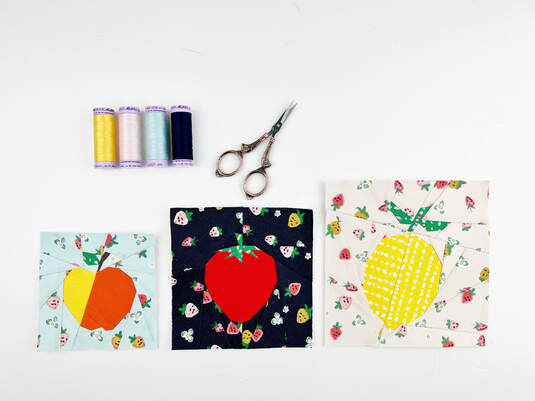
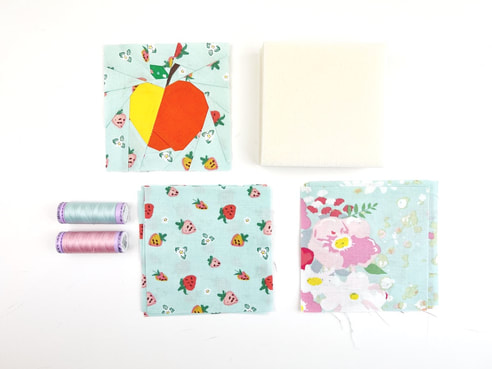

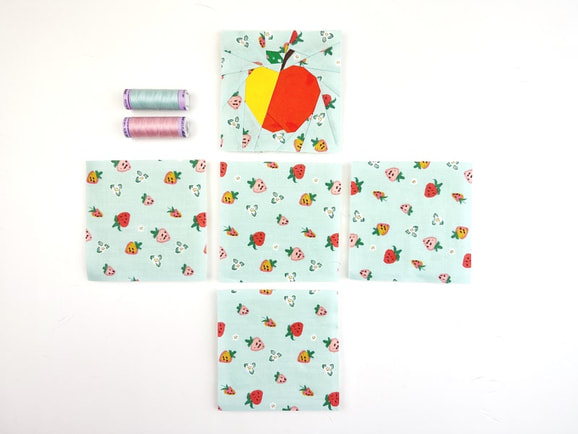
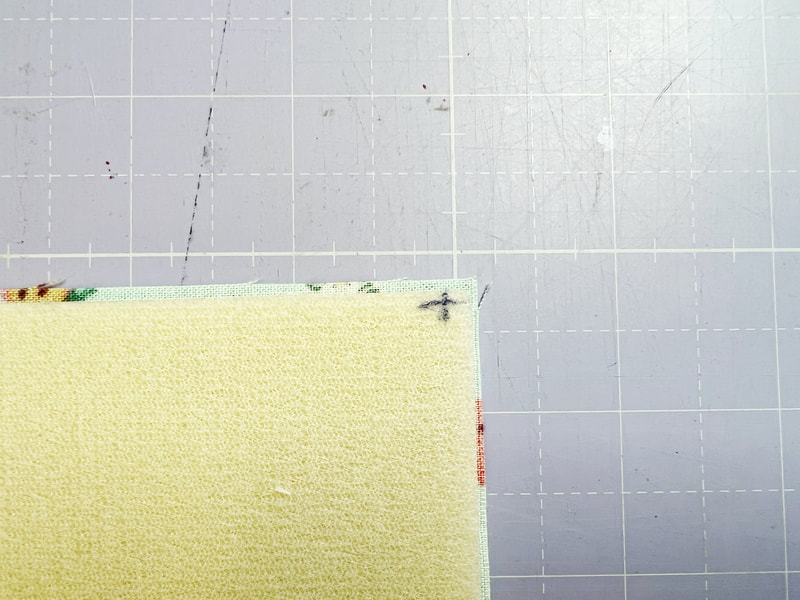






















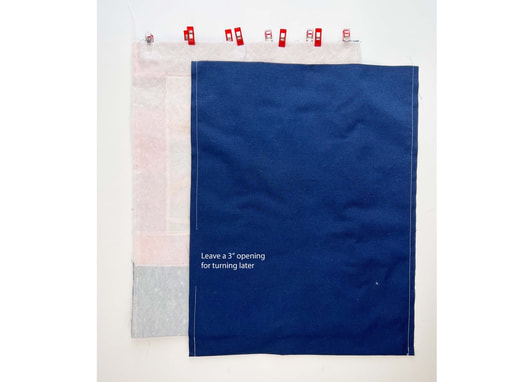



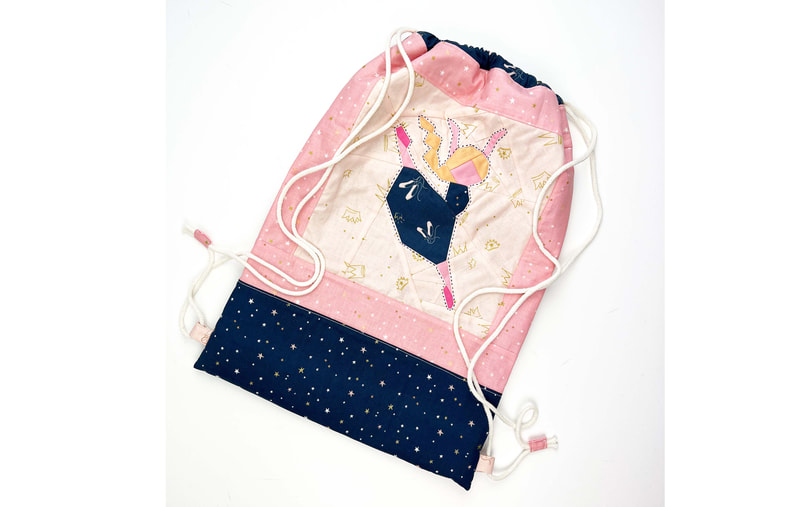























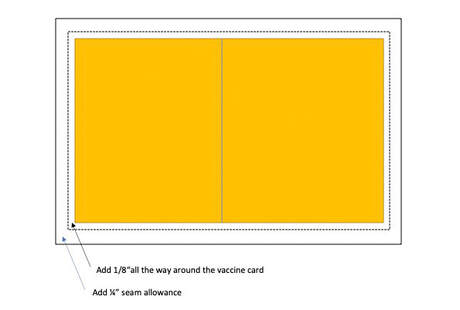















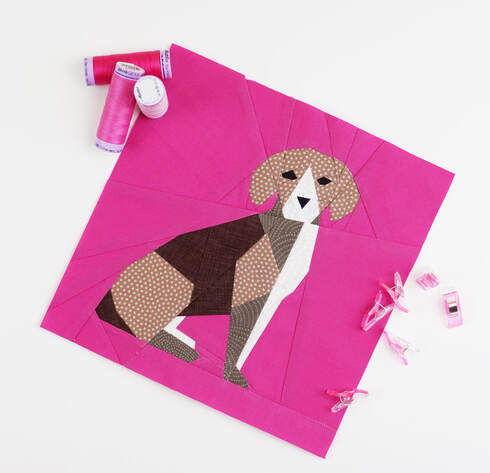



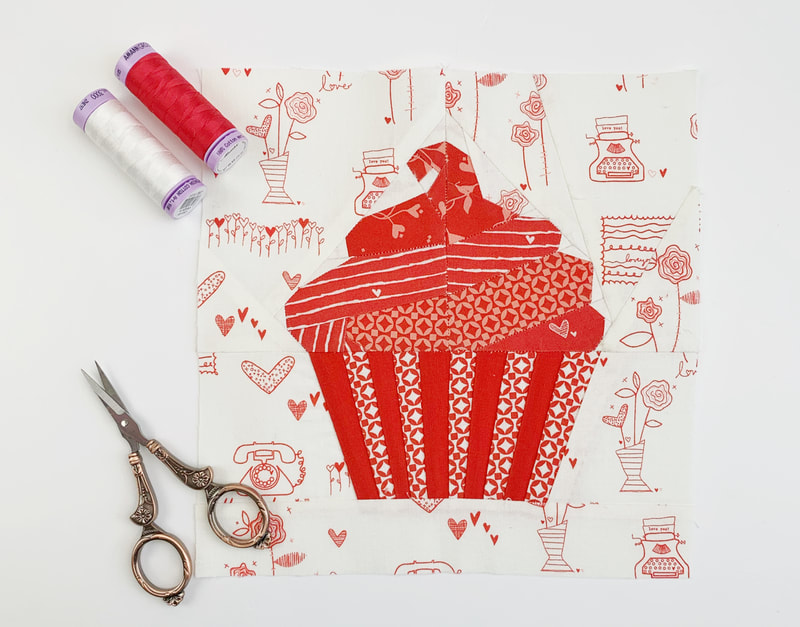







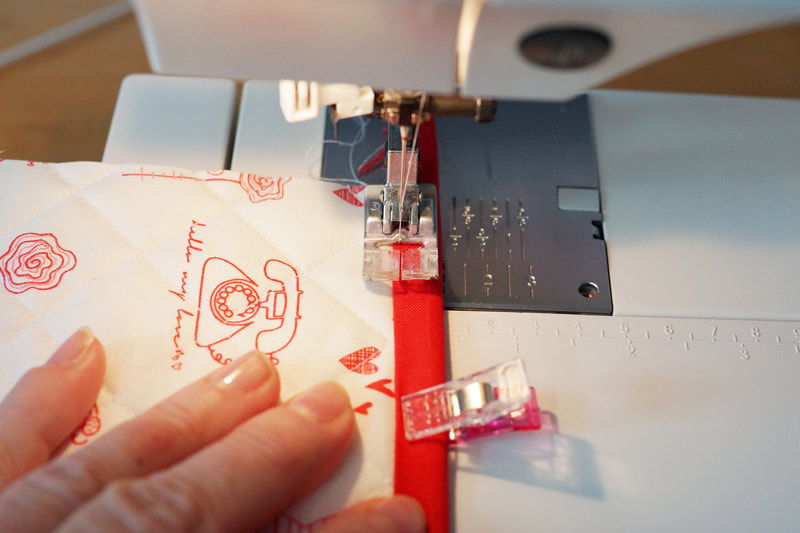

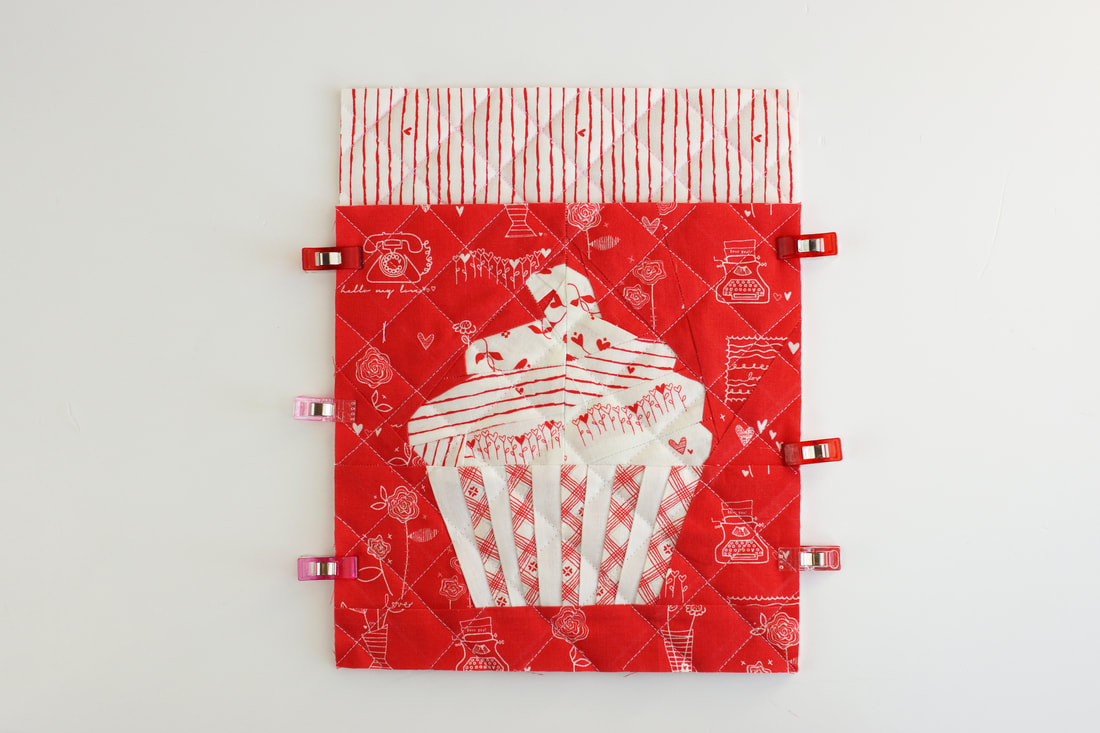
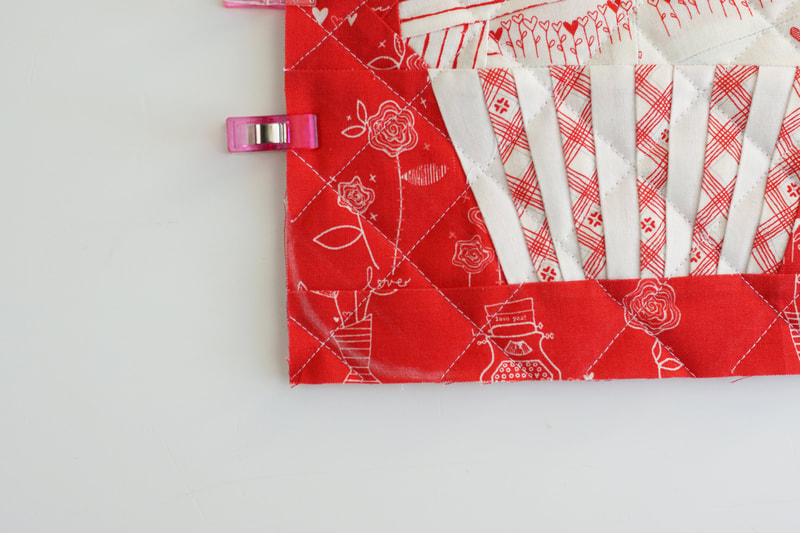
















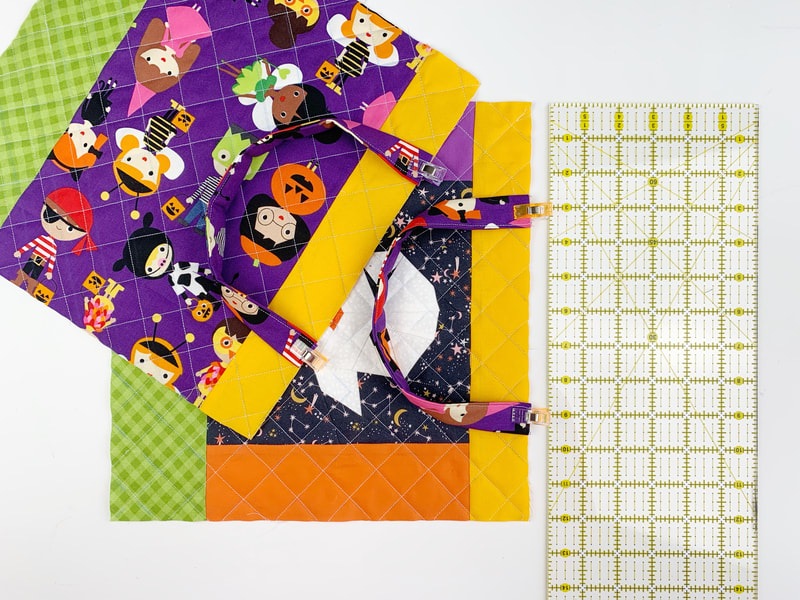

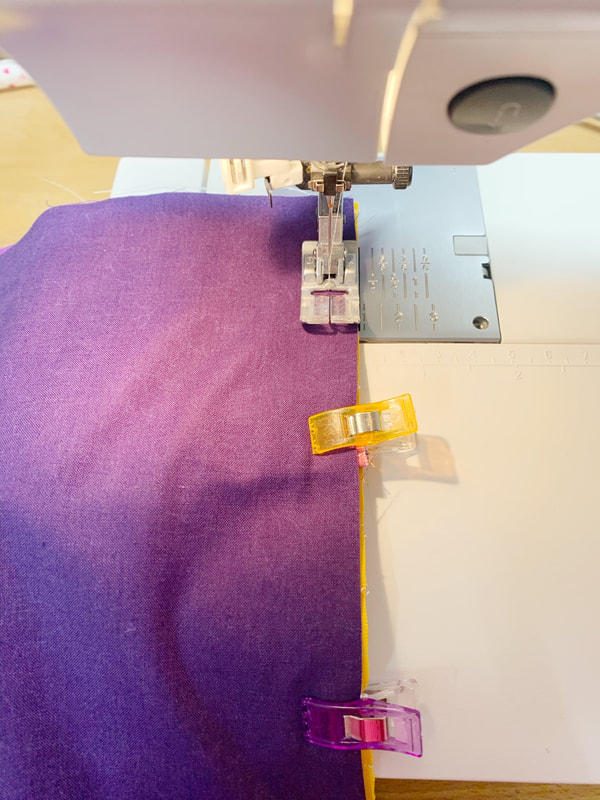










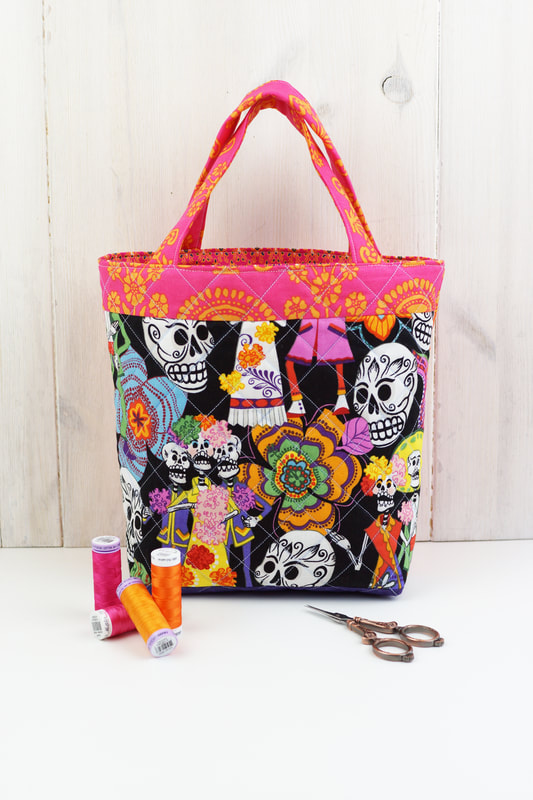


 RSS Feed
RSS Feed
